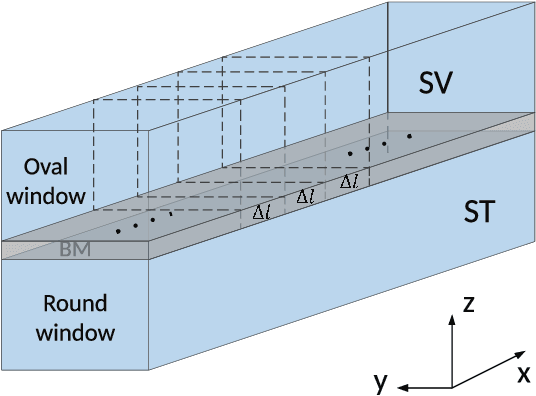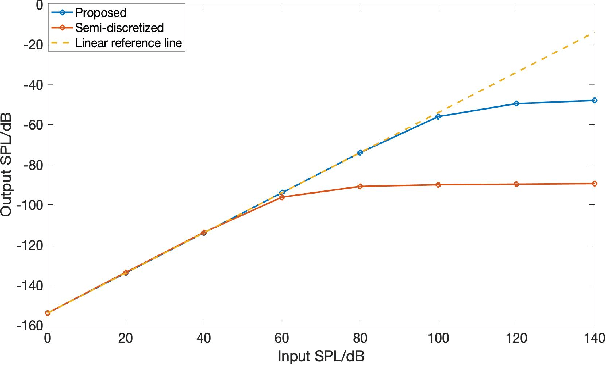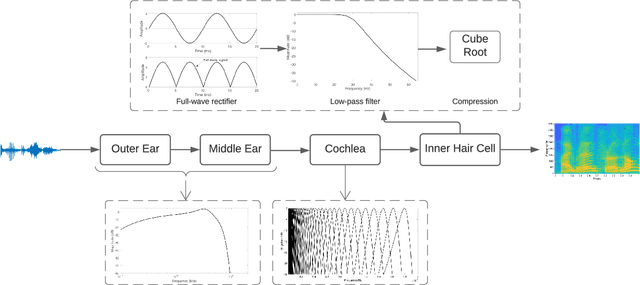V. Sethu
Joint Spatio-Temporal Discretisation of Nonlinear Active Cochlear Models
Aug 12, 2021



Abstract:Biologically inspired auditory models play an important role in developing effective audio representations that can be tightly integrated into speech and audio processing systems. Current computational models of the cochlea are typically expressed in terms of systems of differential equations and do not directly lend themselves for use in computational speech processing systems. Specifically, these models are spatially discrete and temporally continuous. This paper presents a jointly discretised (spatially and temporally discrete) model of the cochlea which allows for processing at fixed time intervals suited to discrete time speech and audio processing systems. The proposed model takes into account the active feedback mechanism in the cochlea, a core characteristic lacking in traditional speech processing front-ends, which endows it with significant dynamic range compression capability. This model is derived by jointly discretising an established semi-discretised (spatially discrete and temporally continuous) cochlear model in a state space form. We then demonstrate that the proposed jointly discretised implementation matches the semi-discrete model in terms of its characteristics and finally present stability analyses of the proposed model.
 Add to Chrome
Add to Chrome Add to Firefox
Add to Firefox Add to Edge
Add to Edge